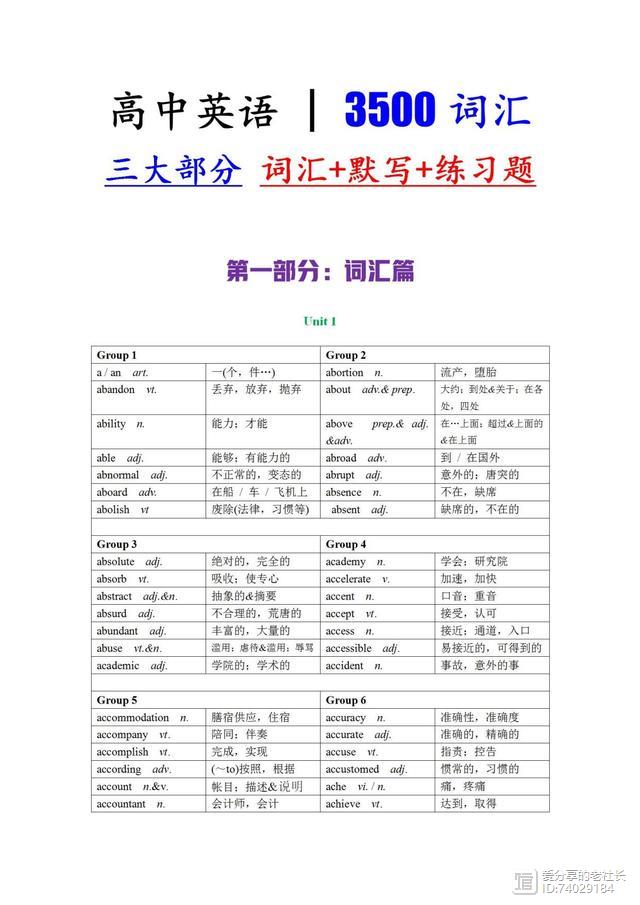2022美国高中数模赛B题翻译及思路
思路:根据附件中的数据,建立二氧化碳浓度回归模型,参数为时间,取时间变化预报未来大气中CO2的浓度水平。
B:
二氧化碳与全球变暖
在工业革命之前,大气中的二氧化碳(CO2)一直保持在百万分之280(ppm)左右。2004年3月,大气中的CO2浓度达到377.7
ppm,这是迄今为止最大的10年平均增长。[1] 根据美国国家海洋和大气管理局(NOAA)和斯克里普斯海洋研究所(SIO)的科学家,月平均CO2浓度在2022年5月达到峰值421
ppm。[2]经济合作与发展组织(OECD)的一份报告预测,到2050年,CO2浓度将达到685 ppm。[3]
《今日科学》杂志的编辑们要求你们的团队对目前报道的和未来预测的二氧化碳浓度水平做出回应。他们提供了两个数据集(CO2数据集1和Temps数据集2)来帮助您的研究。
要求
1.你同意二氧化碳水平的说法吗?使用CO2数据集1分析CO2变化。
a、 你是否同意2004年3月二氧化碳排放量的增加导致了比以往10年期间观察到的更大的增加?为什么或为什么不?
b、
根据数据拟合各种(不止一种)数学模型,以描述过去和预测未来大气中CO2的浓度水平。
c、
使用您的每一个模型来预测2100年大气中的CO2浓度。您的任何模型是否同意2050年CO2浓度将达到685
ppm的说法和预测?如果到2050年,你的模型预测二氧化碳浓度何时达到685 ppm?
d、 你认为哪种模型最准确?为什么?
2.温度和CO2之间的关系是什么?许多科学家认为,全球变暖与大气中CO2浓度之间存在关系。使用您在第1部分和Temps
Data Set 2中的工作来帮助您比较陆地海洋温度和CO2浓度水平。
a、
建立一个模型来预测未来陆地海洋温度的变化。你的模型预测,与1951-1980年的基准期相比,平均陆地海洋温度将在什么时候变化1.25°C、1.50°C和2°C?
b、
建立一个模型来分析自1959年以来二氧化碳浓度和陆地-海洋温度之间的关系(如果有的话)。解释这种关系或证明没有关系。
c、
将第2.b部分的模型扩展到未来。你的模型在未来有多远是可靠的?您的模型预测未来CO2浓度水平和/或陆地海洋温度的能力有什么问题(如果有)?
3.为《今日科学》准备一篇非技术性文章(最多1页),以解释团队的发现和未来可能的建议
总页数不超过25页的PDF解决方案应包括:
一页摘要表。
目录。
您的完整解决方案。
一页非技术文章。
参考列表。
注:HiMCM竞赛有25页的限制。您提交的所有方面都超过了25页的限制(摘要表、目录、参考列表、文章和任何附录)。
2022 HiMCM
Problem B: CO2 and Global
Warming

Prior
to the Industrial Revolution, carbon dioxide (CO2) in the atmosphere was
consistently around 280 parts per million (ppm). The concentration of CO2 in
the atmosphere reached 377.7 ppm in March of 2004, resulting in the largest
10-year average increase up to that time.[1]According to scientists from National Oceanographic
and Atmospheric Administration (NOAA) and Scripps Institution of Oceanography
(SIO) the monthly mean CO2 concentration level peaked at 421 ppm in May 2022.[2] An Organisation for Economic Co-Operations
and Development (OECD) report predicts a CO2 level of 685 ppm by 2050.[3]
The editors of Scientific
Today magazine have asked your team to address these claims of the current
reported and future predictions of CO2 concentration levels. They provided two
data sets (CO2 Data Set 1& Temps Data Set 2) to assist in
your research.
Requirements
1.
Do you agree with CO2 level claims? Use CO2 Data Set 1to analyze CO2 changes.
a.
Do you agree that the March 2004 increase
of CO2 resulted in a larger increase than observed over any previous 10-year
period? Why or why not?
b.
Fit various (more than one) mathematical
models to the data to describe past, and predict future, concentration levels
of CO2 in the atmosphere.
c.
Use each of your models to predict the CO2
concentrations in the atmosphere in the year 2100. Do any of your models agree
with claims and predictions that the CO2 concentration level will reach 685 ppm
by 2050? If not by 2050, when do your models predict the concentration of CO2
reaching 685 ppm?
d.
Which model do you
consider most accurate? Why?
2.
What’s the relationship between temperature
and CO2? Many scientists
think that there is a relationship between warming global temperatures and the
concentration of CO2 in the atmosphere. Use your work in part 1 and Temps
Data Set 2 to assist in your comparison of land-ocean temperatures and CO2
concentration levels.
a.
Build a model to predict future land-ocean
temperatures changes. When does your model predict the average land-ocean
temperature will change by 1.25°C, 1.50°C, and 2°C compared to the base period
of 1951-1980?
b.
Build a model to analyze the relationship
(if any) between CO2 concentrations and land- ocean temperatures since 1959.
Explain the relationship or justify that there is no relationship.
c.
Extend your model from part 2.b. into the
future. How far into the future is your model reliable? What concerns, if any,
do you have with your model’s ability to predict future CO2 concentration levels and/or land-ocean temperatures?
3.
Prepare a non-technical article (1 page maximum) for Scientific Today to
explain in your team’s findings and possible recommendations for the future.
Your PDF solution of no more than 25 total pages should include:
·
One-page Summary Sheet.
·
Table of Contents.
·
Your complete solution.
·
One-page non-technical Article.
·
References list.
Note:The HiMCM Contest has a 25-page
limit. All aspects of your submission count toward the 25-page limit (Summary
Sheet, Table of Contents, Reference List, Article, and any Appendices).
Attachment
2022_HiMCM_Data.xlsx Sheet 1: CO2 Data Set 1
Sheet 2: Temps
Data Set 2
References
[1]

National Oceanographic and Atmospheric Administration.
NOAA Earth System Research Laboratory. (2022, October). Trends in
atmospheric carbon dioxide [Internet]. /ccgg/trends/data.html.
[2] National Oceanographic and Atmospheric Administration.
NOAA Research News & Features. (2022, June 3). Carbon dioxide now mare
than 50% higher than pre-industrial levels [Internet]. https:// levels.
[3] Organisation for Economic Co-Operations and Development.
(2012). The OECD environmental outlook to 2050 [Internet]. /env/cc/Outlook%20to%202050_Climate%20Change%20Chapter_HIGLIGH TS-FINA-8pager-UPDATED%20NOV2012.pdf.
CO2 Data Set
1: Annual month of March averages of CO2 expressed
as a mole fraction in dry air, micromole/mol, abbreviated PPM (parts per
million) derived from continuous air samples for the Mauna Loa Observatory,
Hawaii, U.S.A.
Year
PPM
Year
PPM
Year
PPM
1959
315.98
1980
338.76
2001
371.32
1960
316.91
1981
340.12
2002
373.45
1961
317.64
1982
341.48
2003
375.98
1962
318.45
1983
343.15
2004
377.7
1963
318.99
1984
344.87
2005
379.98
1964
319.62
1985
346.35
2006
382.09
1965
320.04
1986
347.61
2007
384.02
1966
321.37
1987
349.31
2008
385.83
1967
322.18
1988
351.69
2009
387.64
1968
323.05
1989
353.2
2010
390.1
1969
324.62
1990
354.45
2011
391.85
1970
325.68
1991
355.7
2012
394.06
1971
326.32
1992
356.54
2013
396.74
1972
327.46
1993
357.21
2014
398.81
1973
329.68
1994
358.96
2015
401.01
1974
330.19
1995
360.97
2016
404.41
1975
331.13
1996
362.74
2017
406.76
1976
332.03
1997
363.88
2018
408.72
1977
333.84
1998
366.84
2019
411.66
1978
335.41
1999
368.54
2020
414.24
1979
336.84
2000
369.71
2021
416.45
Data Source Credit:National
Oceanographic and Atmospheric Administration (NOAA) GML Data and Scripps
Institution of Oceanography (SIO).
/webdata/ccgg/trends/co2/co2_annmean_mlo.txt.
Temps Data
Set 2: Global annual mean surface-air temperature
change in degrees Celsius based on land and ocean data compared to the
temperature mean of the base period 1951-1980. For example, in 2021, the global
land and sea temperature was 0.84°C above the temperature mean of the base
period of 1951-1980.
Year
Degrees
C
Year
Degrees
C
Year
Degrees
C
1958
0.06
1980
0.26
2002
0.63
1959
0.03
1981
0.32
2003
0.62
1960
-0.03
1982
0.14
2004
0.53
1961
0.06
1983
0.31
2005
0.67
1962
0.03
1984
0.16
2006
0.63
1963
0.05
1985
0.12
2007
0.66
1964
-0.2
1986
0.18
2008
0.54
1965
-0.11
1987
0.32
2009
0.65
1966
-0.06
1988
0.39
2010
0.72
1967
-0.02
1989
0.27
2011
0.61
1968
-0.08
1990
0.45
2012
0.65
1969
0.05
1991
0.4
2013
0.67
1970
0.03
1992
0.22
2014
0.74
1971
-0.08
1993
0.23
2015
0.89
1972
0.01
1994
0.32
2016
1.01
1973
0.16
1995
0.45
2017
0.92
1974
-0.07
1996
0.33
2018
0.84
1975
-0.01
1997
0.46
2019
0.97
1976
-0.1
1998
0.61
2020
1.02
1977
0.18
1999
0.38
2021
0.84
1978
0.07
2000
0.39
1979
0.16
2001
0.53
Data Source
Credit: National Aeronautics and Space
Administration Goddard Institute for Space Studies.
·
GISTEMP Team, 2022: GISS
Surface Temperature Analysis (GISTEMP), version 4. NASA Goddard Institute for Space Studies. Dataset accessed 2022-10-18
at data.giss.nasa.gov/gistemp/.
·
Lenssen, N., G.
Schmidt, J. Hansen, M. Menne, A. Persin, R. Ruedy, and D. Zyss,
2019: Improvements in the GISTEMP uncertainty model. J. Geophys.
Res. Atmos., 124, no. 12, 6307-6326, doi:10.1029/2018JD029522.
【纯干货】2023年高考英语之完型填空的命题特点及专题讲解!(有彩蛋~~)
命题特点选材原汁原味,体现“跨文化意识”一般说来,完形填空的选材多具有一定故事情景和教育意义的短文,其文体主要是记叙文,叙中有议。0000高中英语——3500单词篇——词汇汇总 默写训练 26配套习题含答案
英语单词,一直以来都是学习英语的“硬伤”,不仅因为其数量多,更重要的是单词只要背了就会遗忘。但是同学如果你想提升英语成绩,那么就一定要先背单词,而且是高考3500词。诺哈网2023-08-09 17:30:4000002023高考全国乙卷作文范文-《百花齐放春满园》
阅读下面的材料,根据要求写作。(60分)吹灭别人的灯,并不会让自己更加光明;阻挡别人的路,也不会让自己行得更远。“一花独放不是春,百花齐放春满园。”如果世界上只有一种花朵,就算这种花朵再美,那也是单调的。以生动形象的语言说出了普遍的道理。请据此写一篇文章,体现你的认识与思考。要求:选准角度,确定立意,明确文体,自拟标题;不要套作,不得抄袭;不得泄露个人信息;不少于800字。00002023年高考英语乙卷阅读C篇---英国美食变化:答案解析 英汉注释 词汇积累
2023年高考英语乙卷阅读C篇点击上方蓝色字体关注C这篇文章介绍了尽管英国有着不太出色的美食声誉,但近年来,随着越来越多的顶级厨师在电视上频繁亮相,他们的食谱书经常位居畅销榜首,英国的美食形象正在改变。诺哈网2023-08-25 21:52:460000




